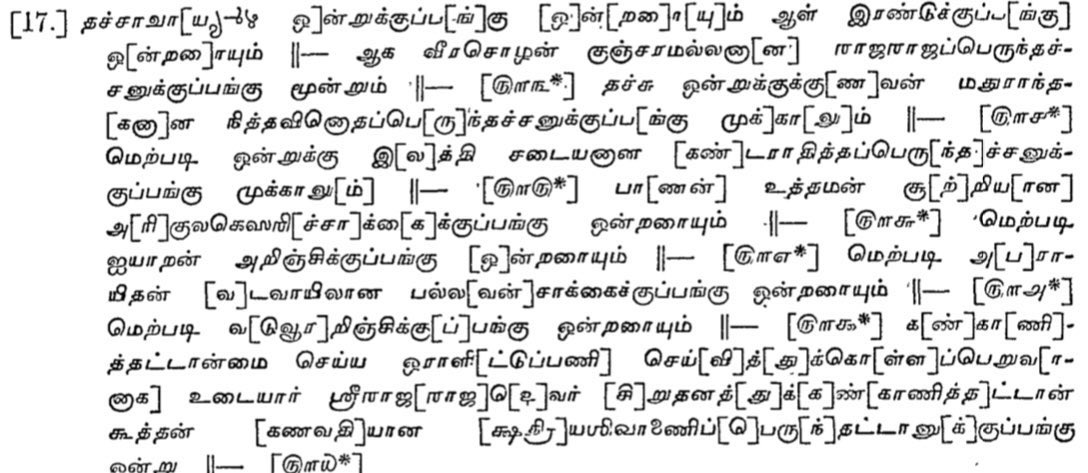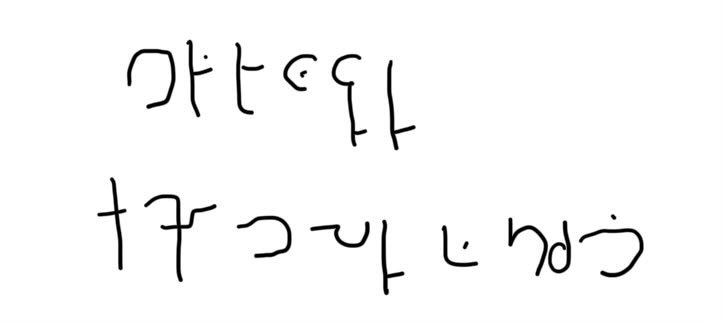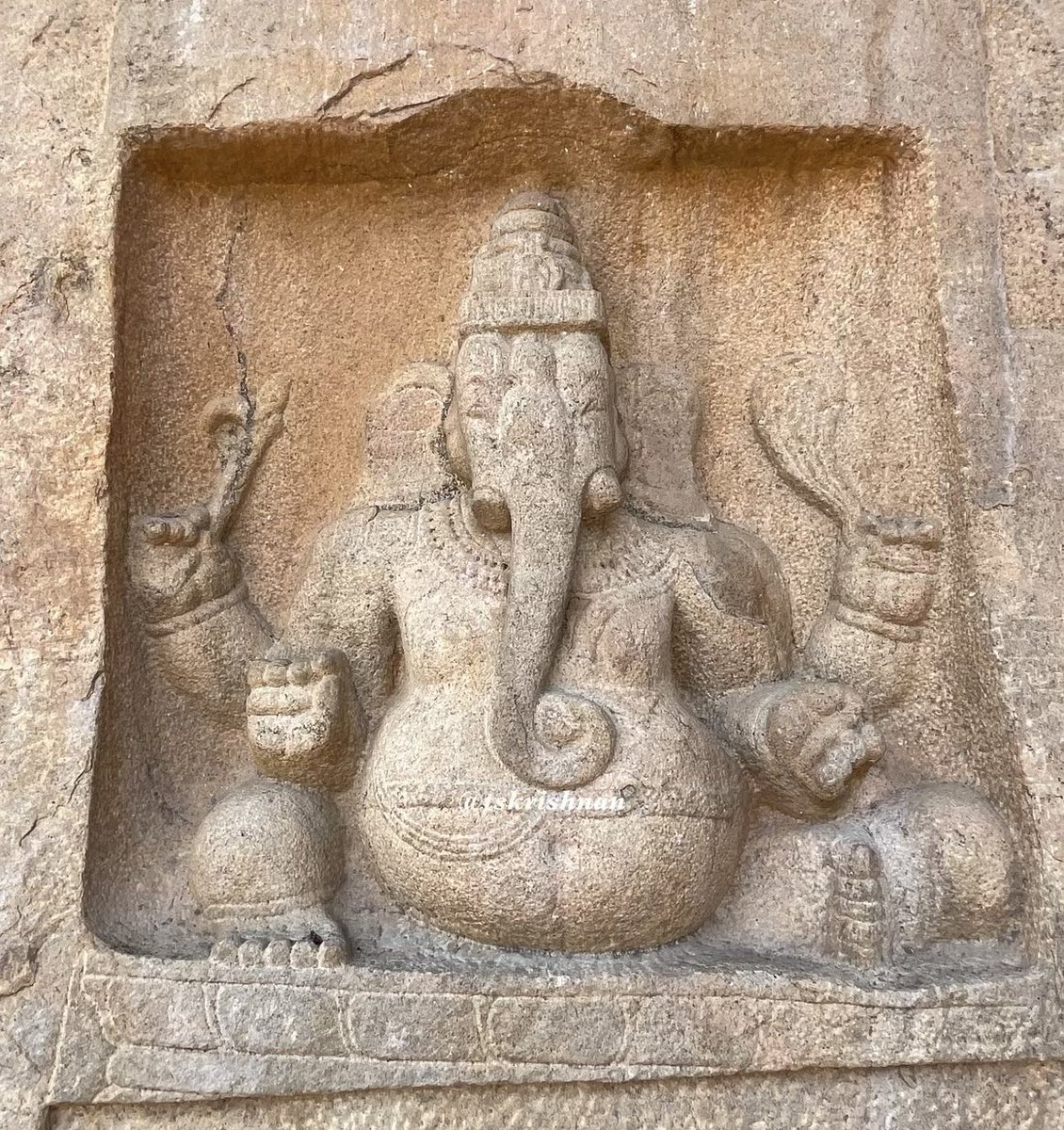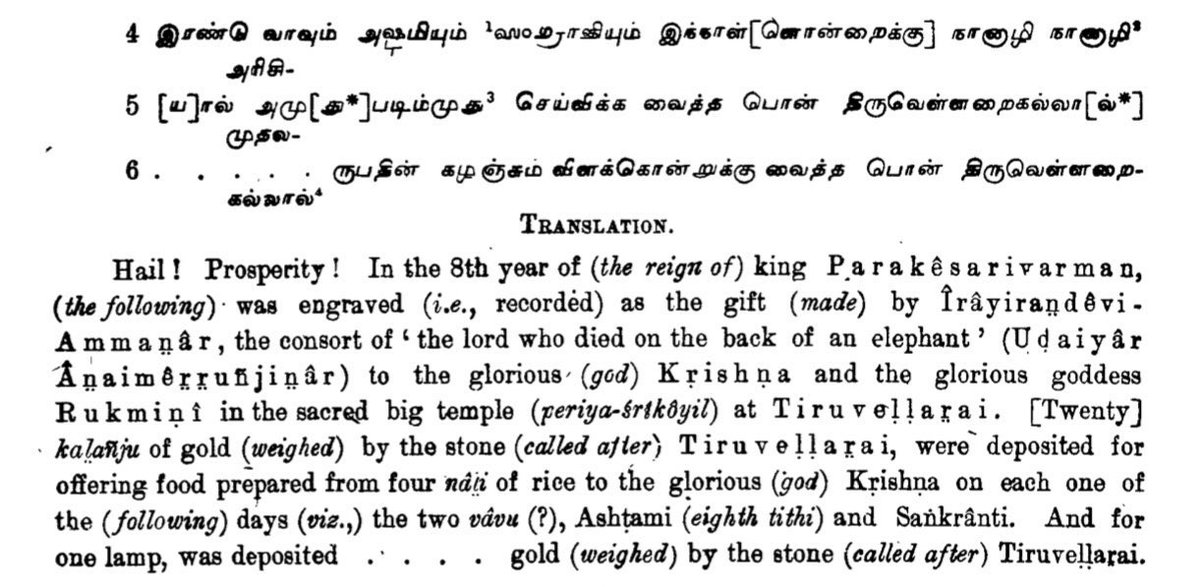On the occasion of #WorldHeritageDay, it’s worthwhile to look into one of the great heritage sites of TN, Vaikuntha Perumal temple in Kanchipuram. Built by Pallavas, this Divya Desam, which is also called as Parameswara Vinnagaram has a set of panels depicting the Pallava History 

Let’s look at some of the panels of this 8th century temple. This one illustrates how the Pallava dynasty was started. On the left, Aswathama, one of the warriors in the epic Mahabharata is doing penance & on right his child was put on creepers. The Child was hence named Pallava 

Pallavas claim that they are descendants of Aswathama which is confirmed by the above panel.
The below one is Pallava King Kumara Vishnu doing Ashwamedha Yajna, with the horse tied to the Yupa. He ruled from Kanchi and was one of the earliest kings to perform this Yajna in TN.
The below one is Pallava King Kumara Vishnu doing Ashwamedha Yajna, with the horse tied to the Yupa. He ruled from Kanchi and was one of the earliest kings to perform this Yajna in TN.

Pallava dynasty had a set back when Samudragupta ventured south and defeated Pallava king Vishnugopa. Hence this panel is left blank with the king ‘sidelined’. Recording the history as it is, the Pallava style ! 

Simhavishnu an illustrious king of Pallavas is depicted here. He was the one who revived the dynasty, defeated the Kalabras and established the seat firmly in Kanchipuram. Pallavas had a glorious run for the next few centuries in north TN due to the foundation laid by him 

Another great king of Pallavas, Narasimhavarman is seen here with his queens on the left picture. His general Paranjothi, who became Siruthonda Nayanar, is also seen below. On the right, the Vatapai war was depicted where he defeated the Chalukya king Pulakesi & sacked the city 



Here is Pallavamallan Nandivarman who rebuilt the temple and also had a longest tenure in the Pallava crown. He is seen sitting on the court and receiving presents & war gifts.
This one completes the history of Pallavas as seen in the panels. A great dynasty of kings they are !
This one completes the history of Pallavas as seen in the panels. A great dynasty of kings they are !

Pic courtesy: Thomas Alexander from FB
• • •
Missing some Tweet in this thread? You can try to
force a refresh


























